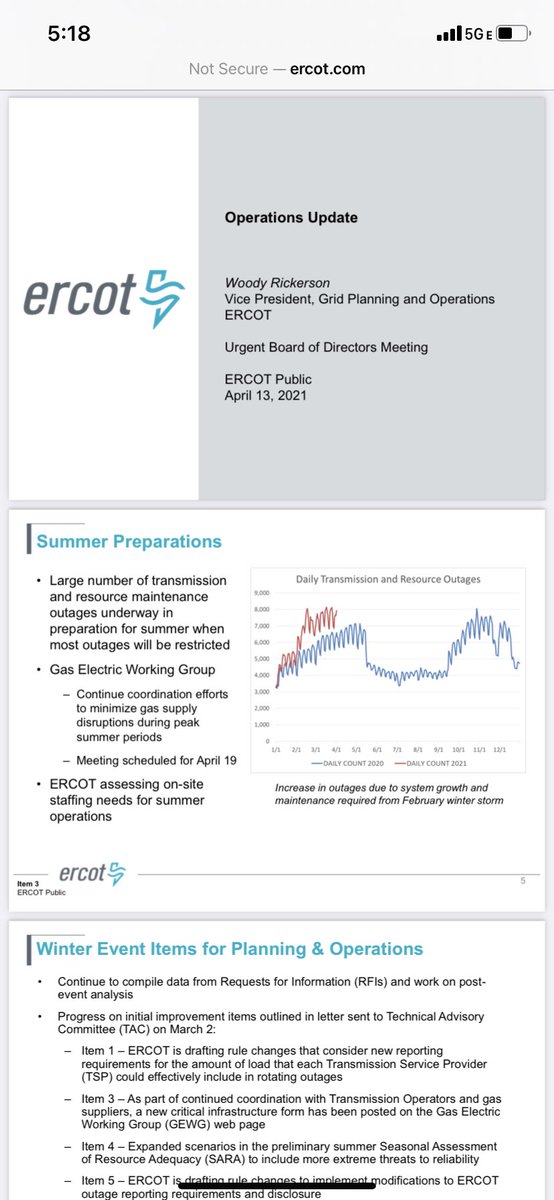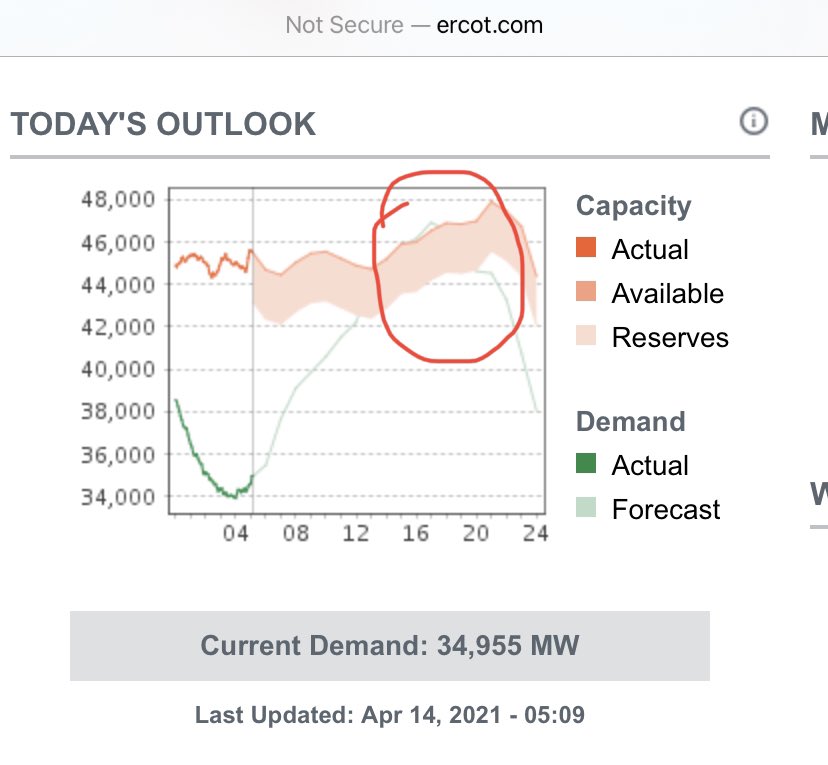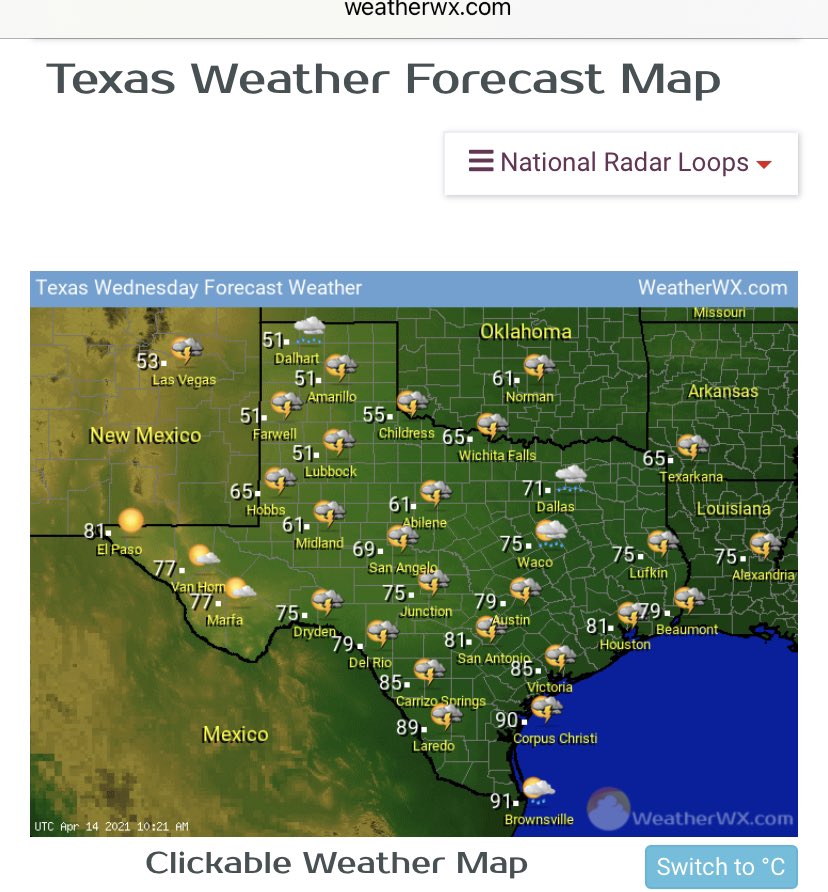Back near $2,000/MWh on a mild spring day, with many of our power plants down for maintenance
https://twitter.com/ercot_iso/status/1382086798063583234
ERCOT planned to have 88 GW of resources to meet peak spring demand of 65 GW with a healthy margin. Today it's struggling to satisfy 49 GW demand on a mild day, pushing prices near the $2,000/MWh cap (avg is $20s/MWh). Over 30 GW of "firm" power plants are down for maintenance. 


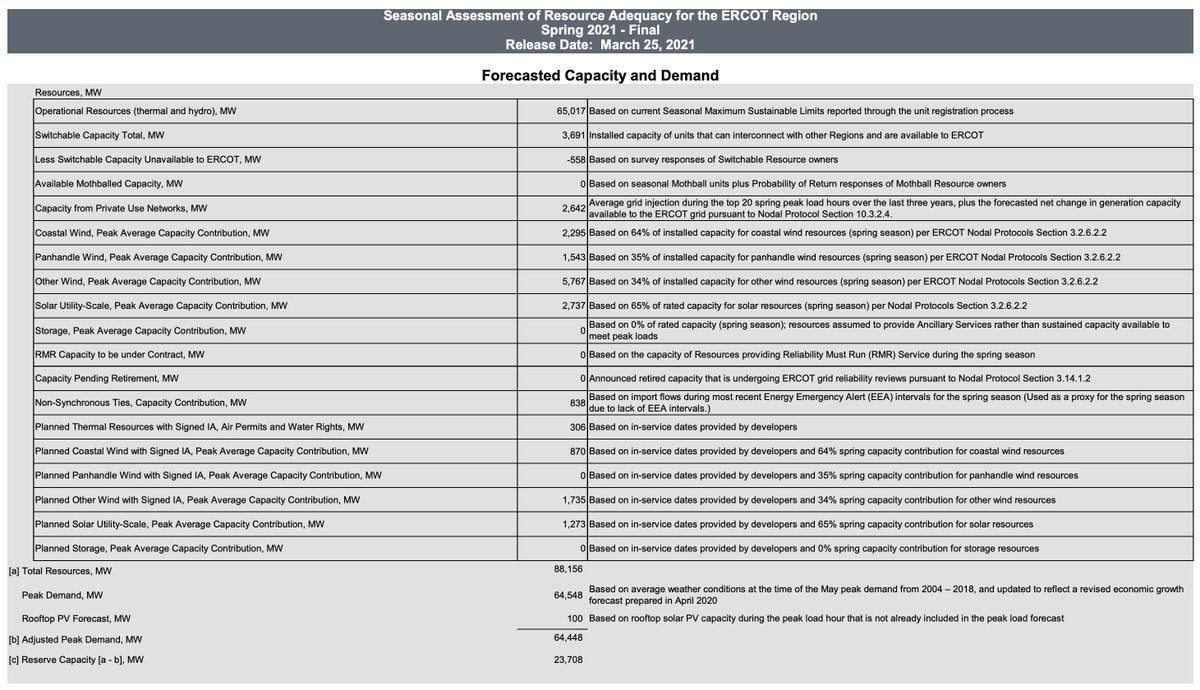
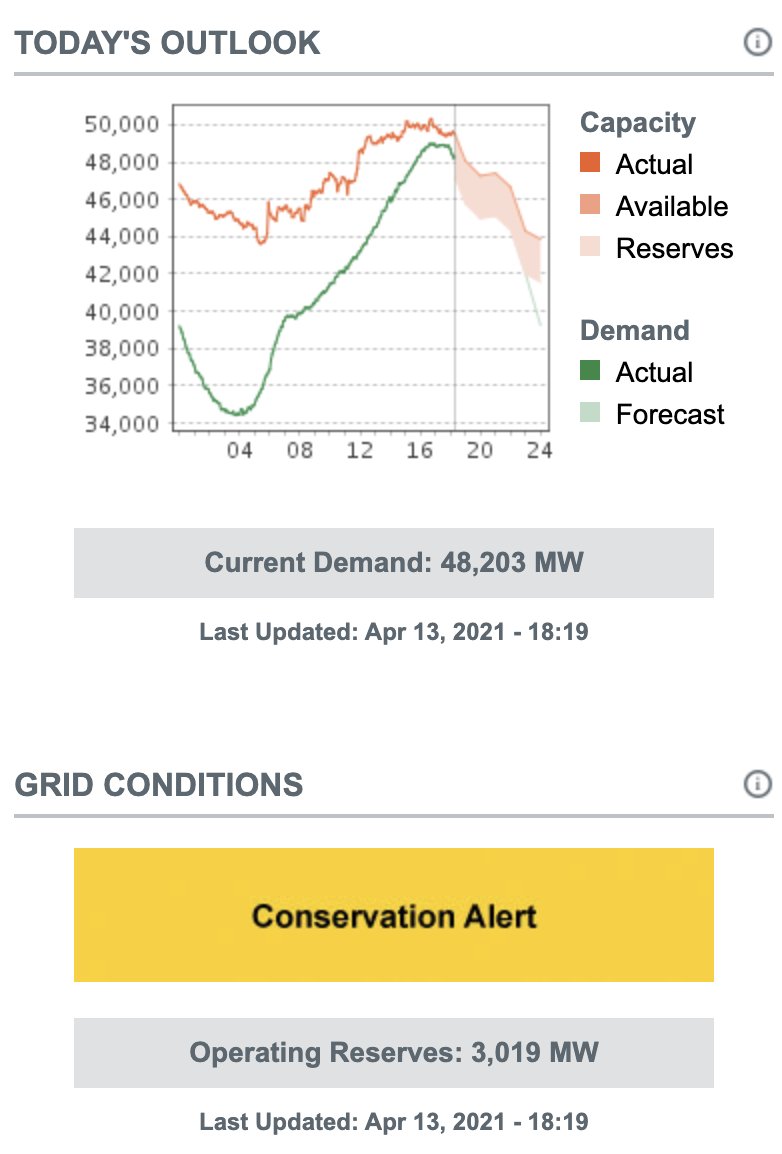
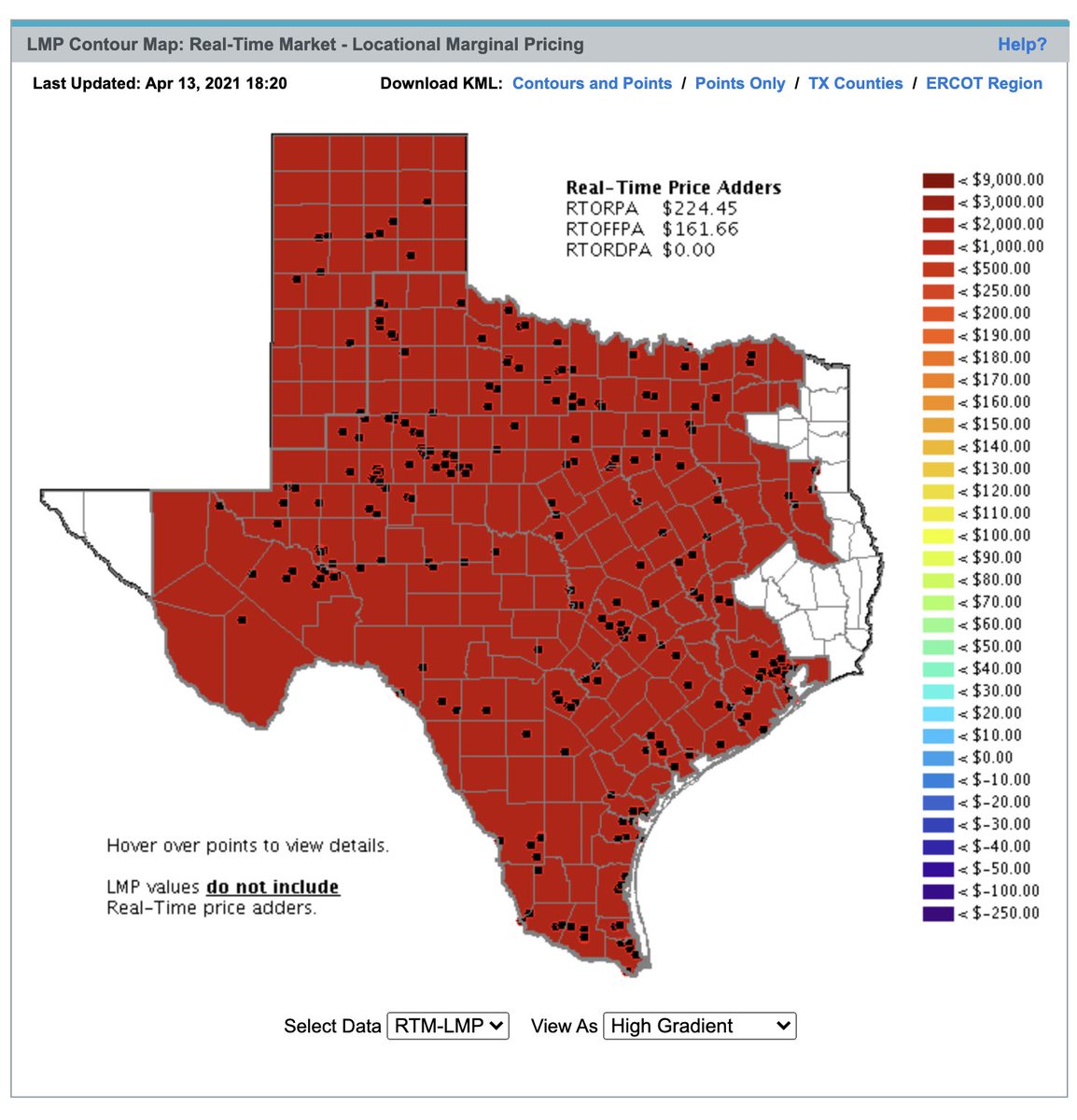
Yesterday's tight power supply is being portrayed as an anomaly. In fact, it was tight twice last week too. Even with mild weather, 30+ GW of "firm" power plants is a lot to be down at once.
https://twitter.com/cohan_ds/status/1381407744184442887?s=20
ERCOT has been reporting 32 GW outages, but not specifying where. EIA data show coal output has been peaking at 8.6 GW (out of 15 GW capacity), nuclear at 3.7 GW (out of 5.1 GW; one reactor down at STP). Most outages must be gas.
eia.gov/beta/electrici…
eia.gov/beta/electrici…
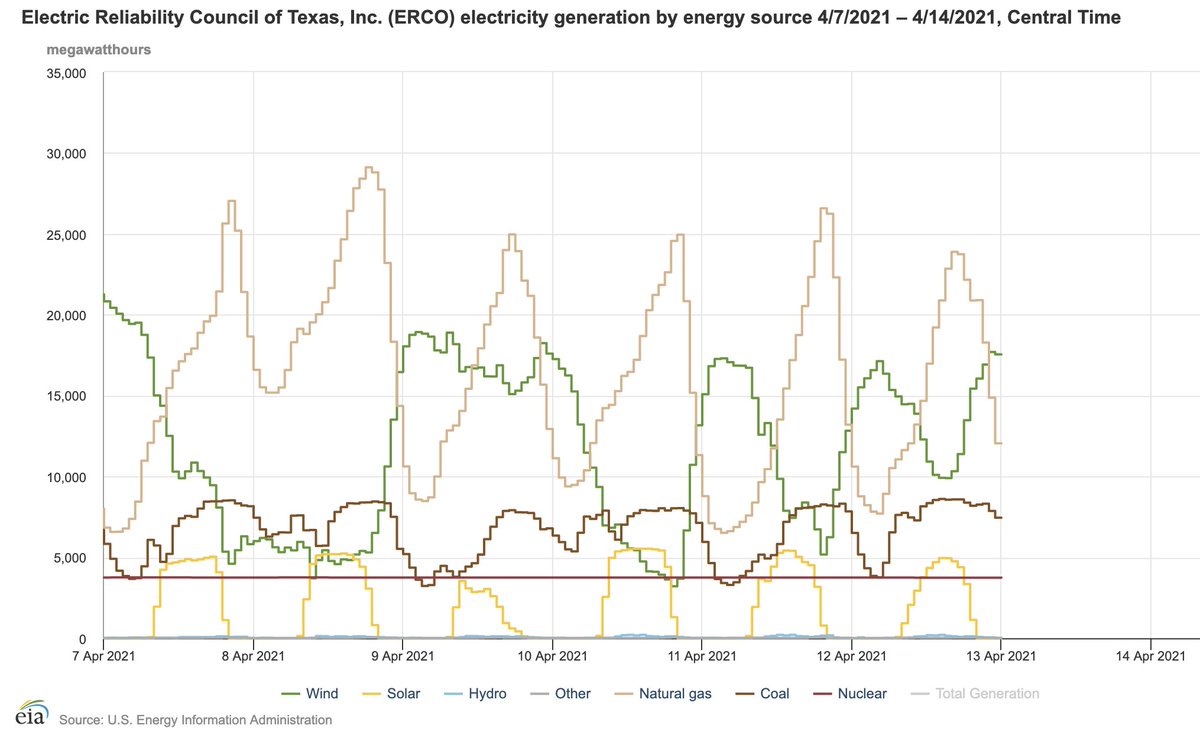
Power demand in ERCOT did exceed forecasts yesterday, but was by no means exceptional. Weather has been mild all week. Demand reached 49 GW yesterday, compared to 65 GW peak forecast for spring and 80 GW for summer.
eia.gov/beta/electrici…
eia.gov/beta/electrici…
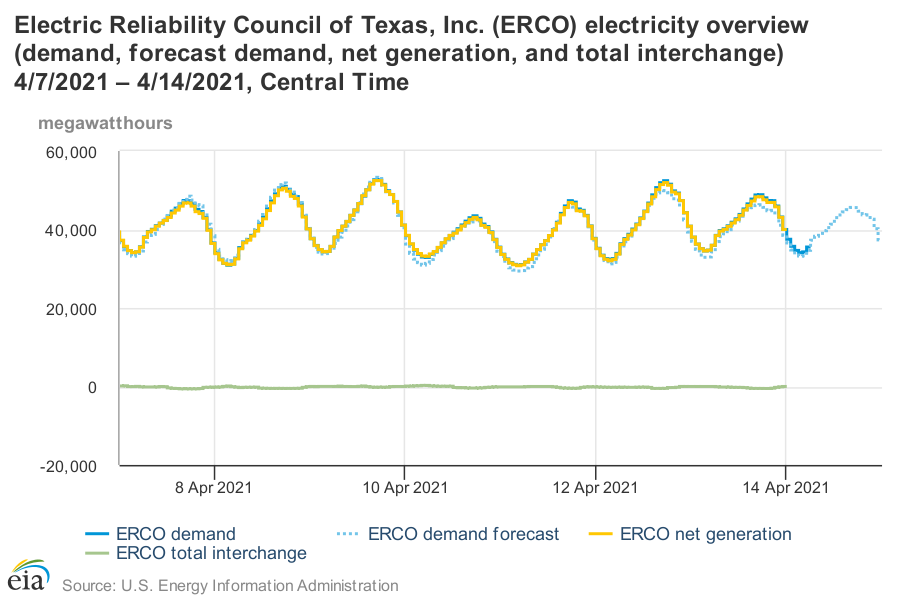
• • •
Missing some Tweet in this thread? You can try to
force a refresh


